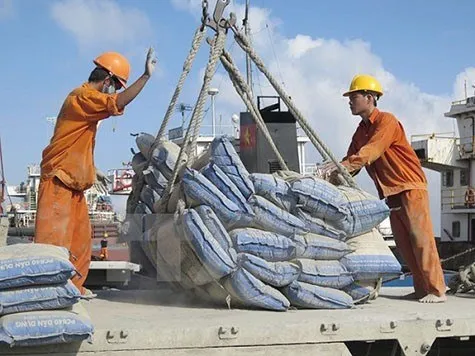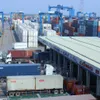Ministry proposes tax cuts to boost cement export

In a recent report submitted to the government, the ministry said that the export tax rate of five percent on cement was too high, which undermined competitiveness of Vietnamese cement in the global market.
Besides, cement is not eligible for input value added tax (VAT) deduction.
The ministry estimated that no deduction on input VAT coupled with five percent export tax rate pushed up prices of cement and clinker by 7.5 USD and 4.5 USD per tonne, respectively.
This made Vietnamese cement unviable and unable to compete with products from China, Thailand, Indonesia and Japan, according to the Ministry of Planning and Investment.
The ministry proposed to the Ministry of Finance that it consider VAT deduction and export tax cut to remove difficulties for local cement producers.
According to the Ministry of Construction, in the local market, supply exceeded demand by around 20 percent, putting local producers into a lot of difficulties.
Local producers were faced with fierce competition on both quality and prices not only in the export markets but also in the domestic market, especially from China which reportedly encountered overcapacity of hundreds of millions of tonnes.
The Vietnam Cement Association estimated that the total production capacity of the cement industry of Vietnam now reached 86 million tonnes while the local demand was at 60 million tonnes in 2017 and the industry must seek ways to export the rest.
Previously, the association said that exports were not easy due to higher prices of Vietnamese cement pushed up by taxes.
By 2020, the cement industry might encounter a surplus of 36 million tonnes to 47 million tonnes, said Nguyen Quang Cung, the association’s president.
Dinh Trong Thinh from the Academy of Finance said that exporting cement was just a temporary solution, however. Vietnam aimed to reduce exports of natural resources while the local cement industry was still using old technologies with high production cost, he said.
"Exporting cement is a difficult problem. Only producers with modern technologies can export and compete,” Thinh said.
According to Le Van Toi, Director of the Building Material Department under the Construction Ministry, no more cement production lines would be put into operation from 2018 and cement companies must have appropriate production and sales plans to avoid creating more pressure on the local market.
Statistics of the General Department of Customs showed that Vietnam exported 9.5 million tonnes of cement and clinker, worth 330 million USD in the first half of this year.
Major import markets of Vietnamese cement are Bangladesh (35.2 percent) and the Philippines (33.8 percent).
Vietnam’s cement and clinker export hit a record high of nearly 20 million tonnes with revenue of 1 billion USD in 2014 but has been on a downward trend since then. Vietnam exported 16.2 million tonnes in 2015 and 14.7 million tonnes in 2016.
Export prices were at around 29-30 USD per tonne for clinker and 45-50 USD per tonne for cement, down by 25 percent over 2014.
Tags:





